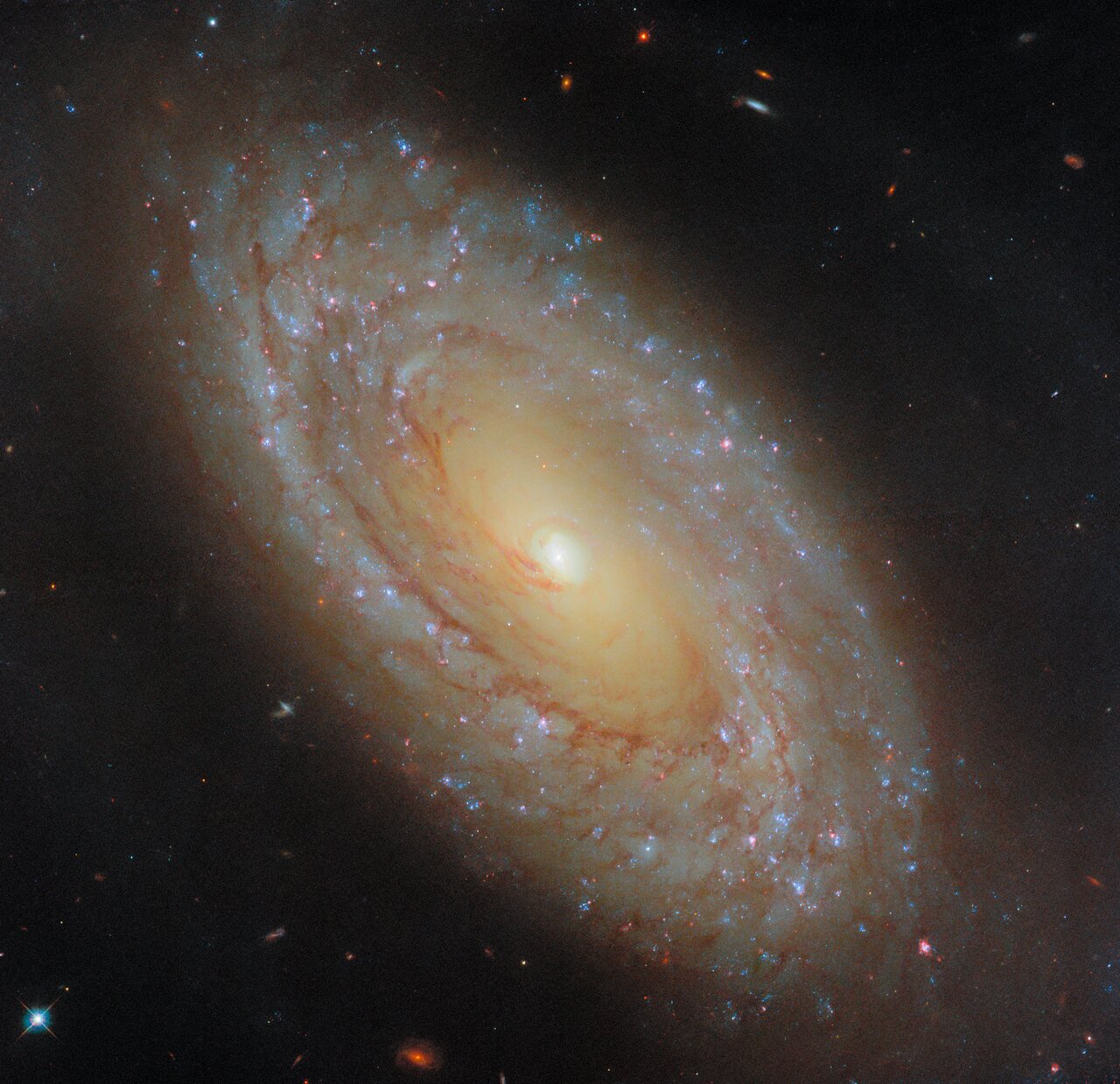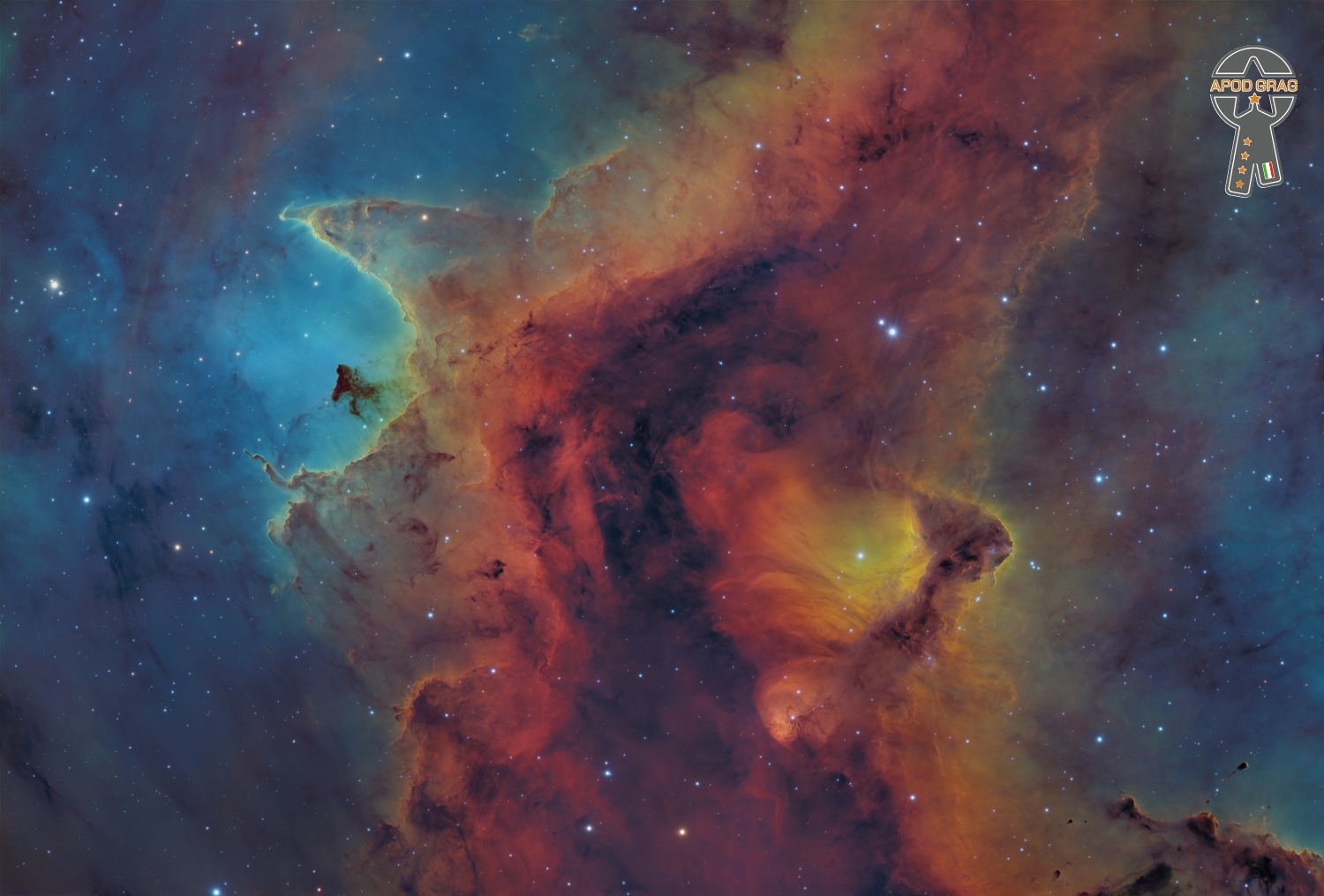Blog
Gilbert Scott-Heron (April 1, 1949 – May 27, 2011) was an American jazz poet, singer, musician, and author known for his work as a spoken-word performer in the 1970s and 1980s. His collaborative efforts with musician Brian Jackson fused jazz, blues, and soul with lyrics relative to social and political issues of the time, delivered in both rapping and melismatic vocal styles. He referred to himself as a “bluesologist”,his own term for “a scientist who is concerned with the origin of the blues”. His poem “The Revolution Will Not Be Televised“, delivered over a jazz-soul beat, is considered a major influence on hip hop music.
Scott-Heron’s music, particularly on the albums Pieces of a Man and Winter in Americaduring the early 1970s, influenced and foreshadowed later African-American musicgenres, including hip hop and neo soul. His recording work received much critical acclaim, especially for “The Revolution Will Not Be Televised”. AllMusic‘s John Bush called him “one of the most important progenitors of rap music“, stating that “his aggressive, no-nonsense street poetry inspired a legion of intelligent rappers while his engaging songwriting skills placed him square in the R&B charts later in his career.”
Scott-Heron remained active until his death, and in 2010 released his first new album in 16 years, titled I’m New Here. A memoir he had been working on for years up to the time of his death, The Last Holiday, was published posthumously in January 2012. Scott-Heron received a posthumous Grammy Lifetime Achievement Award in 2012. He also is included in the exhibits at the National Museum of African American History and Culture (NMAAHC) that officially opened on September 24, 2016, on the National Mall, and in an NMAAHC publication, Dream a World Anew. In 2021, Scott-Heron was posthumously inducted into the Rock and Roll Hall of Fame, as a recipient of the Early Influence Award.
more...Irving Sidney “Duke” Jordan (April 1, 1922 – August 8, 2006) was an American jazz pianist. Jordan was born in New York and raised in Brooklyn where he attended Boys High School. An imaginative and gifted pianist, Jordan was a regular member of Charlie Parker‘s quintet during 1947–48, which also featured Miles Davis. He participated in Parker’s Dial sessions in late 1947 that produced “Dewey Square”, “Bongo Bop”, “Bird of Paradise”, and the ballad “Embraceable You“. These performances are featured on Charlie Parker on Dial.
more...Performing this Sunday April 6th 7pm with Ahmed Ismail Yusuf & Somali Blues for the Cultural Fluency Initiative at Crossroads Saloon at University of St Thomas. The legendary J.D. Steele will also be performing. Gospel meets African Roots.
Meet You at the Crossroads a salon concert produced by the Jay Phillips Center for Interreligious Studies, co-sponsored by the Cultural Fluency Initiative, curated by David Jordan Harris.
Meet You at the Crossroads invites us to a musical meeting place for African-American gospel and Somali blues. Led by celebrated vocalist and conductor J.D. Steele and writer-musician Ahmed Ismail Yusuf, the concert features an enthralling mix of local gospel singers and Somali poetry woven with rhyme, rhythm, and melody. Meet You at the Crossroads is both encounter and collaboration, in which two musical cultures and the communal traditions that gave life to them are explored in conversation during and after the concert.
Schoenecker Arts Center at the University of St. Thomas (2210 Summit Ave., St. Paul).
To register https://tommielink.stthomas.edu/event/10413711

more...
This NASA/ESA Hubble Space Telescope Picture of the Week features the picturesque spiral galaxy NGC 4941, which lies about 67 million light-years from Earth in the constellation Virgo (The Maiden). Because this galaxy is nearby, cosmically speaking, Hubble’s keen instruments are able to pick out exquisite details such as individual star clusters and filamentary clouds of gas and dust.
The data used to construct this image were collected as part of an observing programme that investigates the star formation and stellar feedback cycle in nearby galaxies. As stars form in dense, cold clumps of gas, they begin to influence their surroundings. Stars heat and stir up the gas clouds in which they are born through winds, starlight, and — eventually, for massive stars — by exploding as supernovae. These processes are collectively called stellar feedback, and they impact the rate at which a galaxy can form new stars.
As it turns out, stars aren’t the only entities providing feedback in NGC 4941. At the heart of this galaxy lies an active galactic nucleus: a supermassive black hole feasting on gas. As the black hole amasses gas from its surroundings, the gas swirls into a superheated disc that glows brightly at wavelengths across the electromagnetic spectrum. Similar to stars — but on a much, much larger scale — active galactic nuclei shape their surroundings through winds, radiation, and powerful jets, altering not only star formation but also the evolution of the galaxy as a whole.
[Image Description: A spiral galaxy seen at a diagonal angle. Its very centre is a bright white glowing orb, surrounded by an inner disc of golden light. This is wrapped in a broad outer disc that glows more dimly, with patchy, broken spiral arms swirling around it, filled with small blue and pink star clusters. Dark reddish threads of dust also spiral through the disc, with some strands reaching into the core.]

more...
Franz Joseph Haydn (31 March 1732 – 31 May 1809) was an Austrian composer of the Classical period. He was instrumental in the development of chamber music such as the string quartet and piano trio. His contributions to musical form have led him to be called “Father of the Symphony” and “Father of the String quartet”.
Haydn arose from humble origins, the child of working people in a rural village. He established his career first by serving as a chorister at St. Stephen’s Cathedral, Vienna, then through an arduous period as a freelance musician. Eventually he found career success, spending much of his working life as music director for the wealthy Esterházy family at their palace of Eszterháza in rural Hungary. Though he had his own orchestra there, it isolated him from other composers and trends in music so that he was, as he put it, “forced to become original”. During this period his music circulated widely in publication, eventually making him the most celebrated composer in Europe. With the death of his primary patron Nikolaus Esterházy in 1790, Haydn was free to travel, and augmented his fame—now as a performer before the public—in both London and Vienna. The last years of his life (1803–1809) were spent in a state of debility, unable to compose due to poor health. He died in Vienna in 1809 at the age of 77.
Haydn was a friend and mentor of Mozart, a teacher of Beethoven, and the elder brother of composer Michael Haydn.
more...Johann Sebastian Bach (31 March [O.S. 21 March] 1685 – 28 July 1750) was a German composer and musician of the late Baroque period. He is known for his prolific output across a variety of instruments and forms, including the orchestral Brandenburg Concertos; solo instrumental works such as the cello suites and sonatas and partitas for solo violin; keyboard works such as the Goldberg Variations and The Well-Tempered Clavier; organ works such as the Schübler Chorales and the Toccata and Fugue in D minor; and choral works such as the St Matthew Passion and the Mass in B minor. Since the 19th-century Bach Revival, he has been widely regarded as one of the greatest composers in the history of Western music.
The Bach family already had several composers when Johann Sebastian was born as the last child of a city musician, Johann Ambrosius, in Eisenach. After being orphaned at age 10, he lived for five years with his eldest brother, Johann Christoph, then continued his musical education in Lüneburg. In 1703 he returned to Thuringia, working as a musician for Protestant churches in Arnstadt and Mühlhausen, and for longer periods at courts in Weimar, where he expanded his organ repertory, and Köthen, where he was mostly engaged with chamber music. In 1723 he was hired as Thomaskantor (cantor at St Thomas’s) in Leipzig. There he composed music for the principal Lutheran churches of the city and its university’s student ensemble Collegium Musicum. In 1726 he began publishing his keyboard and organ music. In Leipzig, as had happened during some of his earlier positions, he had difficult relations with his employer. This situation was somewhat remedied when his sovereign, Augustus III of Poland, granted him the title of court composer in 1736. In the last decades of his life, Bach reworked and extended many of his earlier compositions. He died of complications after a botched eye surgery in 1750 at the age of 65.
Bach enriched established German styles through his mastery of counterpoint, harmonic and motivic organisation, and his adaptation of rhythms, forms, and textures from abroad, particularly Italy and France. His compositions include hundreds of cantatas, both sacred and secular. He composed Latin church music, Passions, oratorios, and motets. He often adopted Lutheran hymns, not only in his larger vocal works but, for instance, also in his four-part chorales and his sacred songs. Bach wrote extensively for organand for other keyboard instruments. He composed concertos, for instance for violin and for harpsichord, and suites, as chamber music as well as for orchestra. Many of his works use contrapuntal techniques like canon and fugue.
In the 18th century Bach was primarily known as an organist, while his keyboard music, such as The Well-Tempered Clavier, was appreciated for its didactic qualities. The 19th century saw the publication of some significant Bach biographies, and by the end of that century all of his known music had been printed. Dissemination of scholarship on the composer continued through periodicals (and later also websites) exclusively devoted to him and other publications such as the Bach-Werke-Verzeichnis (BWV, a numbered catalogue of his works) and new critical editions of his compositions. His music was further popularised through a multitude of arrangements, including the Air on the G String and “Jesu, Joy of Man’s Desiring“, and of recordings such as three different box sets with complete performances of his oeuvre marking the 250th anniversary of his death.
more...Herb Alpert (born March 31, 1935 LA,CA) is an American trumpeter, pianist, songwriter, record producer, arranger, conductor, painter, sculptor and theatre producer, who led the band Herb Alpert & the Tijuana Brass (sometimes called “Herb Alpert and the TJB”) in the 1960s. During the same decade, he co-founded A&M Records with Jerry Moss.
Alpert has recorded 28 albums that have appeared on the U.S. Billboard 200 chart, five of which reached No. 1; he has been awarded 14 platinum albums and 15 gold albums. Alpert is the only musician to have reached No. 1 on the U.S. Billboard Hot 100 as both a vocalist (“This Guy’s in Love with You“, 1968) and as an instrumentalist (“Rise“, 1979).
Alpert has sold an estimated 72 million records worldwide. He has received many accolades, including a Tony Award and eight Grammy Awards, as well as the Grammy Lifetime Achievement Award. In 2006, he was inducted into the Rock and Roll Hall of Fame. Alpert was awarded the National Medal of Arts by Barack Obama in 2012.
more...Frederick William Green (March 31, 1911 – March 1, 1987) was an American swingjazz guitarist who played rhythm guitar with the Count Basie Orchestra for almost fifty years. Throughout his career, Green played rhythm guitar, accompanying other musicians, and he rarely played solos. “His superb timing and … flowing sense of harmony … helped to establish the role of the rhythm guitar as an important part of every rhythm section.” Green did play a solo on the January 16, 1938, Carnegie Hall concert that featured the Benny Goodman big band. In the jam session on Fats Waller‘s “Honeysuckle Rose,” Green was the rhythm guitarist for the ensemble, which featured Basie, Walter Page(Basie’s bassist), and musicians from Duke Ellington‘s band. After Johnny Hodges’ solo, Goodman signalled to Green to take his own solo, which the musician Turk Van Lake described in his commentary on the reissued 1938 Carnegie Hall concert as a “startling move.
more...Major “Big Maceo” Merriweather (March 31, 1905 – February 23, 1953) was an American pianist and blues singer. He was mainly active in Chicago through the 1940s.
Born in Newnan, Georgia, he was a self-taught pianist. In the 1920s, he moved to Detroit, Michigan, to begin his music career. He moved to Chicago in 1941, where he made the acquaintance of Tampa Red. Red introduced him to Lester Melrose of RCA Victor and its subsidiary label Bluebird Records, who signed Merriweather to a recording contract. Merriweather suffered a stroke in 1946. He died of a heart attack on February 23, 1953, in Chicago and was interred at the Detroit Memorial Cemetery, in Warren, Michigan.
more...Tracy Chapman (born March 30, 1964) is an American singer-songwriter, widely known for her hit singles “Fast Car” (1988) and “Give Me One Reason” (1995).
She was signed to Elektra Records by Bob Krasnow in 1987. The following year she released her debut album, Tracy Chapman, which became a commercial success, boosted by her appearance at the Nelson Mandela 70th Birthday Tribute concert, and was certified 6× Platinum by the Recording Industry Association of America. The album received six Grammy Award nominations, including one for Album of the Year, three of which she won: Best New Artist, Best Female Pop Vocal Performance for her single “Fast Car”, and Best Contemporary Folk Album. In 1989, she released her second album, Crossroads, which earned her an additional Grammy Award nomination for Best Contemporary Folk Album. Her third album, Matters of the Heart, followed in 1992.
Her fourth album, New Beginning, was released in 1995 and became another worldwide success. It was certified 5× platinum by the RIAA and yielded the hit single “Give Me One Reason”, which earned her the Grammy Award for Best Rock Song. Five years would pass before the release of her fifth album, Telling Stories (2000). Let It Rain and Where You Live followed in 2002 and 2005, respectively. Her most recent studio album, Our Bright Future, was released in 2008. The remastered compilation album Greatest Hits, which she curated, was released in 2015.
In 2023, Chapman became the first black person to score a country number one with a solo composition, and to win the Country Music Association Award for Song of the Year, when Luke Combs covered her song “Fast Car”.
more...“This cosmic close-up looks deep inside the Soul Nebula. The dark and brooding dust clouds outlined by bright ridges of glowing gas are cataloged as IC 1871. About 25 light-years across, the telescopic field of view spans only a small part of the much larger Heart and Soul nebulae. At an estimated distance of 6,500 light-years the star-forming complex lies within the Perseus spiral arm of the Milky Way, seen in planet Earth’s skies toward the constellation Cassiopeia. An example of triggered star formation, the dense star-forming clouds of IC 1871 are themselves sculpted by the intense winds and radiation of the region’s massive young stars. This color image adopts a palette made popular in Hubble images of star-forming regions.”

Frankie Laine (born Francesco Paolo LoVecchio; March 30, 1913 – February 6, 2007 Chicago) was an American singer and songwriter whose career spanned nearly 75 years, from his first concerts in 1930 with a marathon dance company to his final performance of “That’s My Desire” in 2005. Often billed as “America’s Number One Song Stylist”, his other nicknames include “Mr. Rhythm”, “Old Leather Lungs”, and “Mr. Steel Tonsils”. His hits included “That’s My Desire”, “That Lucky Old Sun“, “Mule Train“, “Jezebel“, “High Noon“, “I Believe“, “Hey Joe!“, “The Kid’s Last Fight“, “Cool Water“, “Rawhide“, and “You Gave Me a Mountain“.
He sang well known theme songs for many Western film soundtracks, including 3:10 To Yuma, Gunfight at the O.K. Corral, and Blazing Saddles, although his recordings were not charted as country and western. Laine sang an eclectic variety of song styles and genres, stretching from big band crooning to pop, western-themed songs, gospel, rock, folk, jazz, and blues. He did not sing the soundtrack song for High Noon, which was sung by Tex Ritter, but his own version (with somewhat altered lyrics, omitting the name of the antagonist, Frank Miller) was the one that became a bigger hit. He also did not sing the theme to another show he is commonly associated with—Champion the Wonder Horse (sung by Mike Stewart)—but released his own, subsequently more popular, version.
Laine’s enduring popularity was illustrated in June 2011 when a TV-advertised compilation called Hits reached No. 16 on the UK Albums Chart. The accomplishment was achieved nearly 60 years after his debut on the U.K. chart, 64 years after his first major U.S. hit and four years after his death.
more...More Posts
- Stan Getz Day
- Sonny Stitt Day
- World Music on Flamenco Fridays with Paco de Lucia
- Daily Roots with Derrick Morgan
- The Cosmos with NGC 488
- Joshua Redman Day
- Joe Sample Day
- Sadao Watanabe Day
- World Music with Muthu Kumar and Ravi Kulur
- Daily Roots with Dave Barker and the Upsetters
- RHYTHM ROOTS WORKSHOP 1-31-18
- The Cosmos with M74
- Charlie Musselwhite Day
- Phillip Glass Day
- Roosevelt Sykes Day
- World Fusion with Okra Playground
- Daily Roots with Ansel Collins
- RHYTHM ROOTS WORKSHOP 1-30-18
- The Cosmos with M61
- Marty Balin



